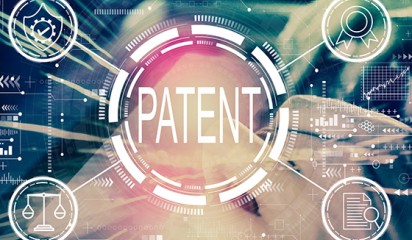On the 1 March 2022, the newest edition of the European Patent Office’s (EPO) Guidelines for Examination came into force. Whilst not binding in and of themselves, the Guidelines aim to reflect best practice as informed by the ever expanding and evolving body of case law at the EPO. Whilst the updated Guidelines contain a large number of minor changes across the entire scope of the European Patent Convention (EPC), the more significant changes are outlined below.
Description amendments
Perhaps the most hotly anticipated update concerns the requirement to bring the description into conformity with the granted claims. Ever fearful of being seen to abandon subject matter by deleting significant portions of the specification, applicants and their representatives have often sought to do the bare minimum in this regard. Previously, it was acceptable (and common practice) to simply add a statement to the beginning of the detailed description setting out that the scope of the invention was defined in the claims themselves, with any potentially unclaimed or otherwise incompatible embodiments being provided for context. This changed with the 2021 edition of the Guidelines for Examination, which brought in much stricter requirements regarding the labelling of “inconsistencies” between the claimed embodiments and those set out in the main body of the application. It outright forbade the use of generic disclaimers heavily relied on by the majority of the profession.
Emboldened by these changes, at least one otherwise allowable application was outright refused on these grounds alone. This case (T1989/18) was subsequently overturned by the technical board of appeal who went so far as to question the legal basis for the requirements to align the description with the claims in the first place.
On inspection of the new guidelines, it appears that they have been softened following the considerable feedback from professional representatives, though it is not quite the full reversal that many would have preferred. On this point, it’s worth noting that the consultation period preceding the upcoming version of the Guidelines closed before the decision on T1989/18 was made public – such that we might expect further watering down of these requirements in future editions.
Specifically, whilst existing Guidelines warn against ‘inconsistencies between the claims and the description,’ the new Guidelines merely require ‘embodiments that contradict the independent claims’ to be deleted or otherwise ‘not to be presented as being in accordance with the invention.’
Priority
The Guidelines on partial priority have been updated following G1/15. Effectively the long-standing issue of poisonous priority has been side-stepped by making it clear that a single claim may contain subject matter having different priority dates, including in cases where the claim recites a generalisation of a priority claiming feature. In such a case, the embodiment to the specific feature maintains its claim to priority whilst all other embodiments captured under the subsequent generalisation are treated as newly filed.
The EPO has also clarified its practice regarding priority entitlement for applications having multiple applicants. A subsequent priority claiming application must include all original applicants of the priority founding application, save those who have transferred their rights to the applicant(s) of the subsequent application. Whilst proof of a transfer may be provided after the priority claiming application is filed, it is important to note that the transfer(s) must have been executed beforehand.
Computer Implemented Inventions
The Decision of the Enlarged Board of Appeal G1/19 concerned the patentability of computer simulations. To the relief of many professional representatives, the decision confirms that the approach to assessing inventiveness and technical character established by COMVIK and refined by INFINEON still stands. Namely that the longstanding practice of assessing the patentability of computer implemented inventions also applies to numerical simulations – whereby the claims are separated into technical and non-technical features, whilst features that may be considered non-technical in isolation may nevertheless contribute to the technical character of an invention provided they contribute to producing a technical effect serving a technical purpose.
Applicants interested in patenting AI related inventions have been granted a boon in the form of new Guidelines concerning the patentability of mathematical methods. Whilst the EPO maintain that ‘algorithms related to artificial intelligence are, on their own, of an abstract nature’ they may still be taken into account in the assessment of inventive step providing they contribute to producing a technical effect serving a technical purpose – i.e. that they satisfy the so-called COMVIK approach set out above. Moreover, one of the examples of a sufficiently technical invention provided by the Guidelines includes the use of a machine-learning algorithm in a parallel computing architecture.
Double Patenting
A relatively minor update follows G4/19. Whilst double patenting has long been considered barred at the EPO, it was not expressly prohibited by any portion of the EPC. The Enlarged Board of Appeal has finally weighed in on the issue and declared that double patenting is indeed forbidden under Article 125 EPC which recognises (in the absence of specific provisions in the EPC) the general principles of law recognised in the contracting states.








